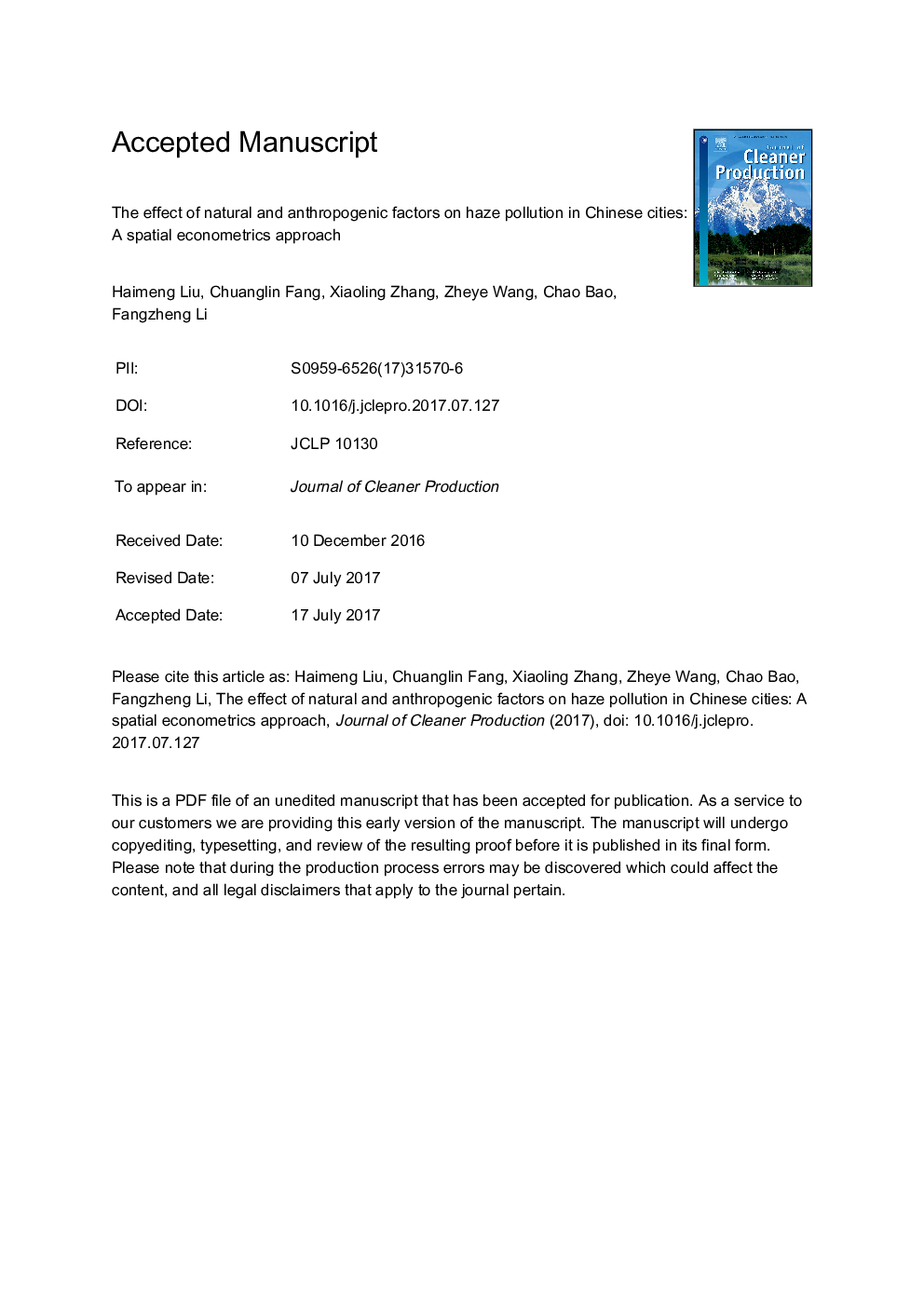| کد مقاله | کد نشریه | سال انتشار | مقاله انگلیسی | نسخه تمام متن |
|---|---|---|---|---|
| 5480007 | 1522089 | 2017 | 26 صفحه PDF | دانلود رایگان |
عنوان انگلیسی مقاله ISI
The effect of natural and anthropogenic factors on haze pollution in Chinese cities: A spatial econometrics approach
ترجمه فارسی عنوان
تأثیر عوامل طبیعی و انسان شناختی بر آلودگی هوا در شهرهای چینی: رویکرد اقتصاد سنجی فضایی
دانلود مقاله + سفارش ترجمه
دانلود مقاله ISI انگلیسی
رایگان برای ایرانیان
کلمات کلیدی
موضوعات مرتبط
مهندسی و علوم پایه
مهندسی انرژی
انرژی های تجدید پذیر، توسعه پایدار و محیط زیست
چکیده انگلیسی
The haze pollution accompanies rapid urbanization and industrial development is the central environmental problem for academia, the government, and the public in China today. Recent studies have investigated the different aspects of haze, but no holistic research has yet been conducted that includes both natural and anthropogenic factors and spatial effects. This study used the Air Quality Index (AQI) as the measure of haze pollution and 14 natural and anthropogenic factors as explanatory variables. We applied exploratory spatial data analysis and the spatial Durbin model (SDM) to analyze the spatial distribution and variation pattern of the AQI and to quantitatively estimate the contributions and spatial spillovers of different natural and anthropogenic factors on the air quality of 289 prefecture-level cities in 2014. The results show that approximately 1.255 billion people in 280 Chinese cities were exposed to an unhealthy atmospheric environment. A significant positive spatial autocorrelation of AQI values was identified, with the influence of urban air pollution extending, on average, between 600 and 800Â km. The AQI of a city increased by more than 0.45% for every 1% increase in the average AQI of neighboring cities. The most heavily polluted regions are mainly located in urban agglomeration areas-the areas with the highest population densities. Urbanization, urban population aggregation and industrialization had a significant positive impact on the AQI. The spillover effect of car density is also significant. Except for temperature, all the natural factors that we studied have a negative effect on the AQI, with vegetation cover having a significant spatial spillover effect around cities. Only the ratio of green space to urban built-up areas has a significant local effect, while wind speed has a more significant effect locally than on neighboring areas. The amount of urban land, per capita gross domestic product, elevation, and relative humidity have no significant effect. The final remarks of this paper suggest three strategies to prevent haze and to develop more sustainable cities.
ناشر
Database: Elsevier - ScienceDirect (ساینس دایرکت)
Journal: Journal of Cleaner Production - Volume 165, 1 November 2017, Pages 323-333
Journal: Journal of Cleaner Production - Volume 165, 1 November 2017, Pages 323-333
نویسندگان
Haimeng Liu, Chuanglin Fang, Xiaoling Zhang, Zheye Wang, Chao Bao, Fangzheng Li,
